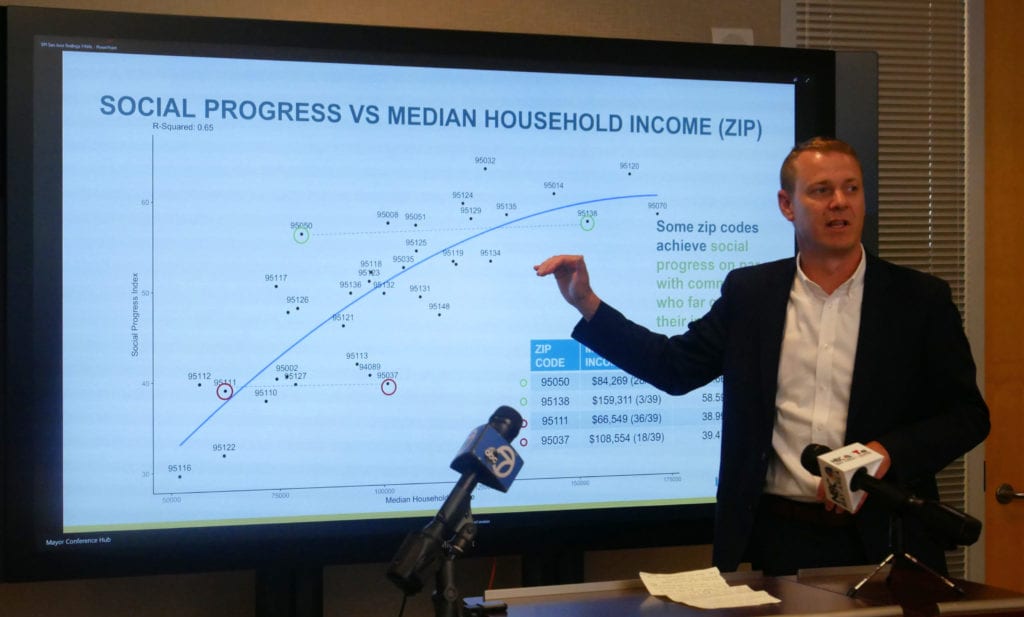Amid conversations about displacement and inequality across San Jose neighborhoods, the city is hoping data is the answer to increased equity.
Mayor Sam Liccardo on Wednesday launched the Social Progress Index in San Jose, becoming the first city in the nation to utilize the tool, which shows where needs are not being met, where resources are being used and to highlight more complete stories of communities using federal, state and local data sets.
“We’ll be able to really understand in granular detail how we can best improve quality of life across matters from education, to safety, access to economic opportunity, income – a whole host of indicators we know that are important to the health and well being of our community,” Liccardo said.
He said the data will help show the great disparities in the city, especially in discussions of the anticipated displacement of workers as a result of technology, automation and globalization.
“We know that certainly here in Silicon Valley, there are many, many neighborhoods that are left behind,” he said. “This is helping us be more rigorous in identifying where these neighborhoods are and how we can best help them.”
The mayor was joined by Gina Dalma, senior vice president of public policy for Silicon Valley Community Foundation, and Social Progress Imperative’s U.S. Director Justin Edwards.
“Philanthropy is at its best when it really is able to leverage public dollars into our community’s welfare,” Dalma said. “This is an example of just that.”

Published by the nonprofit Social Progress Imperative, the index was developed in 2014 in response to the global financial crisis. It acts as a complement to economic measures to examine quality of life.
The San Jose Index framework examines 42 indicators and 50 datasets, which look at three distinct dimensions: basic human needs, foundations of wellbeing and opportunity. These measurements include supermarket access, average broadband speed, housing cost burden and property crime rate.
Demonstrating how the interactive model of San Jose’s data can be used, Edwards used the Willow Glen neighborhood as an example. The data shows that two census tracts less than half a mile apart ranked 1 and 167, respectively, meaning one area had more access and a better quality of life despite both being in an affluent district.
“We know that wealth is not everything,” Edwards said. “(The Index) is sort of challenging the way of determining progress only by an indication of wealth. We can use this to better understand our community at large.”
Looking at San Jose’s 39 zip codes, the highest ranking neighborhood is in Almaden Valley, while the lowest is in Alum Rock West. When it comes to the area’s 213 different census tracts, the Rose Garden neighborhood ranks 71, while Blossom Valley ranks 95.
Liccardo hopes this data will reach every community in San Jose and lead to constructive conversations. The goal is for residents to see where they align in San Jose, as well as share what’s missing or not fully accurate.
“We need community feedback to really ground truth data in many ways,” Liccardo said. “I think we’re having really important conversations right now around equity and displacement and a whole host of issues. Let’s at least start with the same data and see how we can together work on improving those indicators of social well being.”
Contact Katie Lauer at [email protected] or follow @_katielauer on Twitter.



Leave a Reply
You must be logged in to post a comment.